It's not too late to sow perennials and biennials in July to fill your borders with returning blooms – here are my picks for 7 flowers to plant this month
Top picks from an experienced horticulturist, along with essential sowing tips
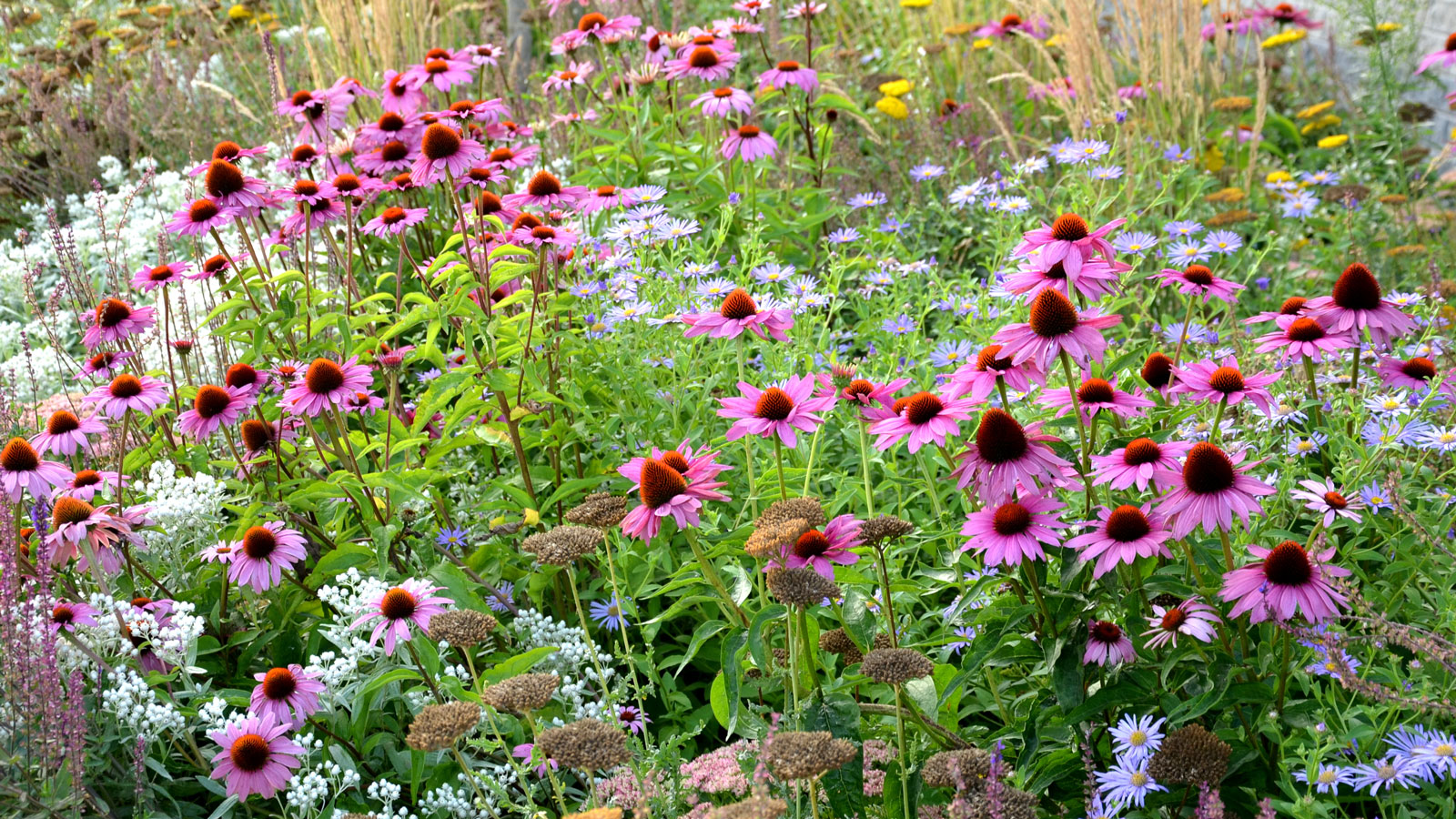

Perennials, biennials, and annuals can all be in full bloom this month, but is it too late to plant flowers in July? The answer is no, there are plants you can add to beds and borders to boost displays this month, plus you can even think further ahead.
There is a selection of biennials and perennials that can be started from seed in July. Not only is growing plants from seed wholly satisfying, but it gives you a cost-effective way to boost your flowering displays for future growing seasons.
I have grown lots of flowers over my years as a professional gardener, as I grew hundreds of annuals, biennials, and perennials each year from seed, either for garden displays or for cutting to go into bouquets or vases. I have picked seven biennial or perennial flowers to plant in July, and also provided some sowing advice for each.
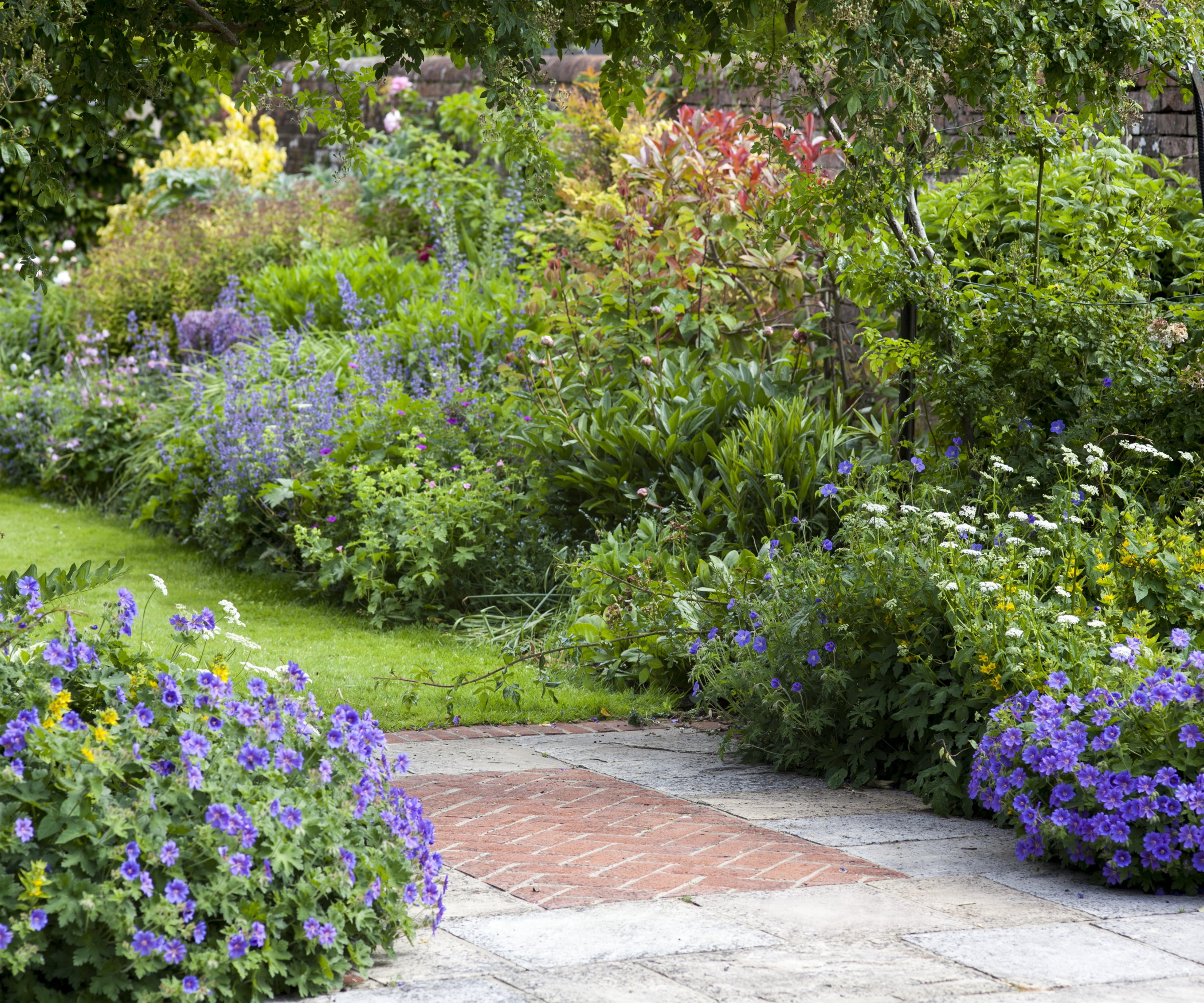
Is it too late to plant flowers in July?
It is usually recommended to add plants to flower beds, borders, or containers in spring or fall. However, there are some annuals to sow in July, as well as many perennials you can plant during the hotter months if you want to fill a few gaps or spruce up your beds.
To help new plants establish, planting in the cooler parts of the day and watering the planting hole beforehand is recommended, as well as regular deep watering to settle the plants in.
While growing from seed is not the norm in July, there are some plants that you can start. It offers a budget-friendly way to introduce new plants that will bring color and texture to your garden next year and potentially for years to come.
7 of the best biennial and perennial flowers to plant in July
So let's take a look at a lovely selection of biennials and perennials that make great flowers to plant in July – with a little time and effort this summer, you can get fantastic blooming displays to enjoy in the future.
Design expertise in your inbox – from inspiring decorating ideas and beautiful celebrity homes to practical gardening advice and shopping round-ups.
Scabious

These delicate, pretty flowers can go by many names. Whether you know them as scabious, scabiosa, or the pincushion flower, there is no denying these glorious cottage garden plants look stunning in flower beds, make great plants for pollinators, and can also be fabulous cut flowers.
Different varieties come in pastel shades of pink, purple, lilac, or white, and range from seven to 30 inches tall. It means there is a scabious for any different styles or designs.
To grow scabiosa this month, you can sow seeds indoors into trays or pots filled with seed compost. This is suitable for the second half of July, and the plants can be grown on, potted up, and overwintered to plant outside in spring.
Alternatively, throughout the month, you can sow seeds directly outdoors. Thinly sow seeds a half-inch deep, cover with a thin layer of soil, and keep moist for good germination.
Whatever option you choose, the scabious will start blooming next year, and you’ll have flowering plants that regrow every year in US hardiness zones 4-9.
See the range of scabiosa seeds at Amazon
See the range of scabiosa seeds at Walmart
See the range of scabiosa seeds at Burpee
See the range of scabiosa seeds at True Leaf Market
Coneflower
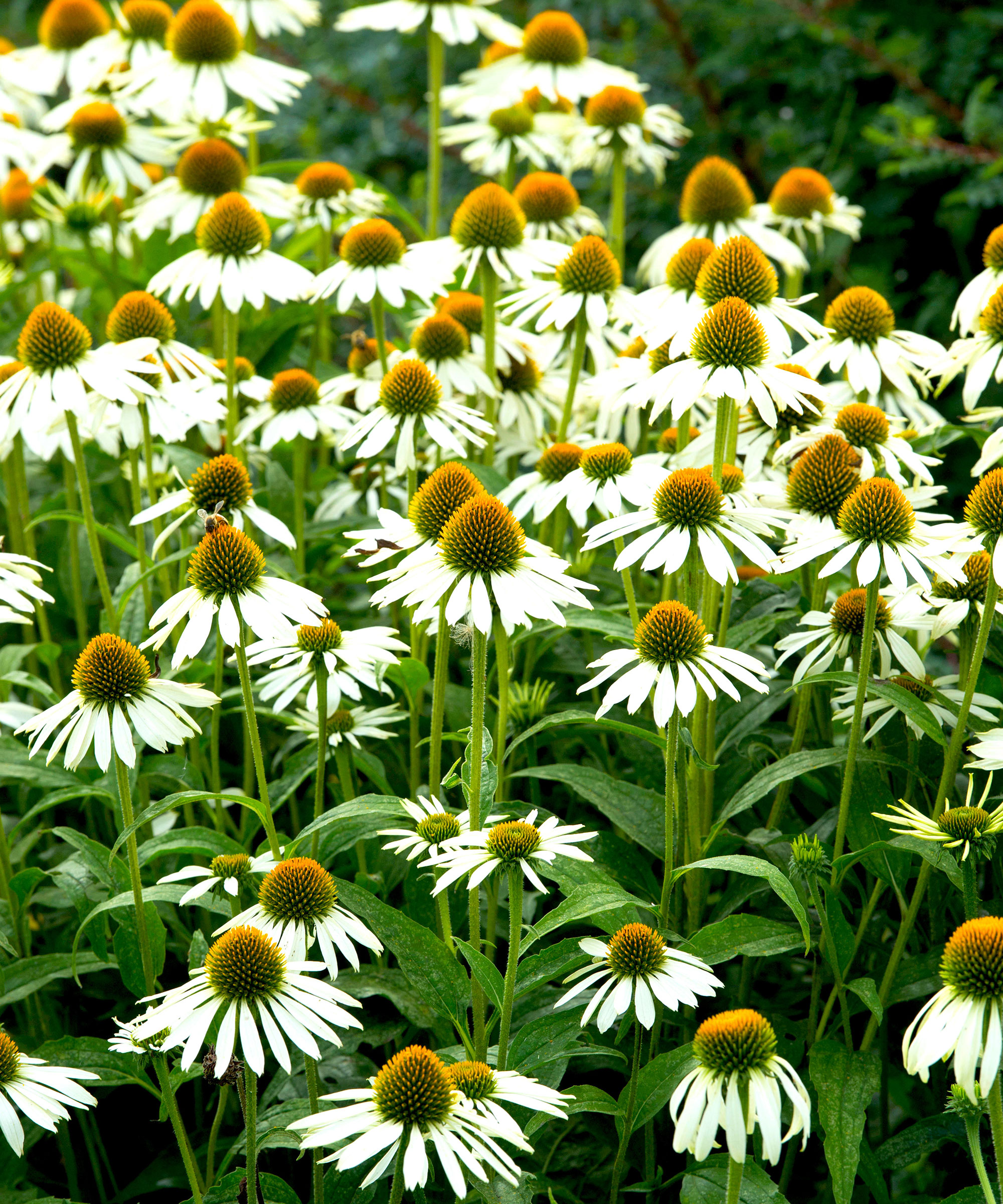
Coneflowers, also known commonly as echinacea, are spectacular additions to beds or containers. The petals open and then stretch out backwards around the large central seed head, offering texture and structure to a space, even long after their late summer blooming period.
They are native plants that adore full sun. If you give them more than six hours of daily sunlight, they will reward you with a great display of blooms that are loved by bees and butterflies.
Coneflower seeds can be sown into trays or pots this month. Keep the containers in a protected place, such as a cold frame, and the young plants can go into beds come fall, where the coneflowers can overwinter to burst into flower next year.
There are many great coneflower varieties to choose from, including types that produce blooms in a mix of colors. An example is these ‘Cheyenne Spirit’ echinacea seeds at True Leaf Market that have maroon, tangerine, yellow and cream flowers.
Once you have the perennial plants in your borders, you can even harvest coneflower seeds each year to sow for more plants.
Wallflowers
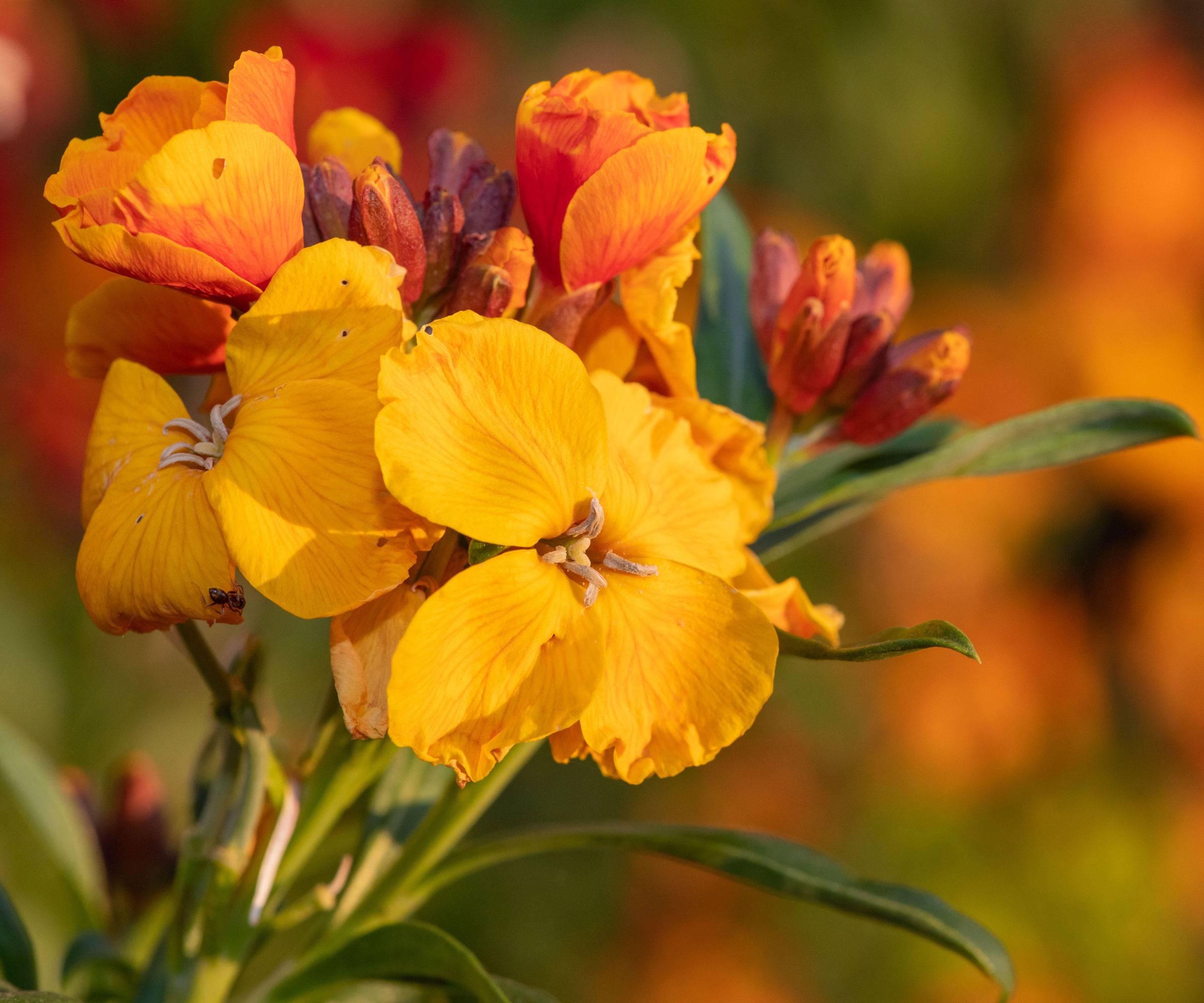
Wallflowers are traditionally biennial plants, although some perennial types can bloom for several growing seasons. Even perennial varieties typically need to be propagated every few years, as they can be short-lived.
Wallflowers are hardy in US hardiness zones 4–9 and make excellent spring-flowering plants for beds, borders, and containers. They come in a wide range of colours, many varieties are highly scented, and wallflowers can bloom from spring through late summer or fall if growing conditions are right and regular deadheading is done.
Wallflower seeds can be sown in late spring to early summer, either indoors or outdoors. Seeds can be started in trays or pots filled with compost, but they do not like temperatures too warm and germinate best at 55-65°F.
The simple alternative is to sow seeds outdoors. Make half-inch drills around 12 inches apart and thinly sow the seeds before covering with soil. Keep the ground moist, and the seeds should germinate within two weeks.
Transplant the seedlings from their starter bed to their final position. The plants will happily overwinter to burst into glorious bloom come spring.
Myosotis
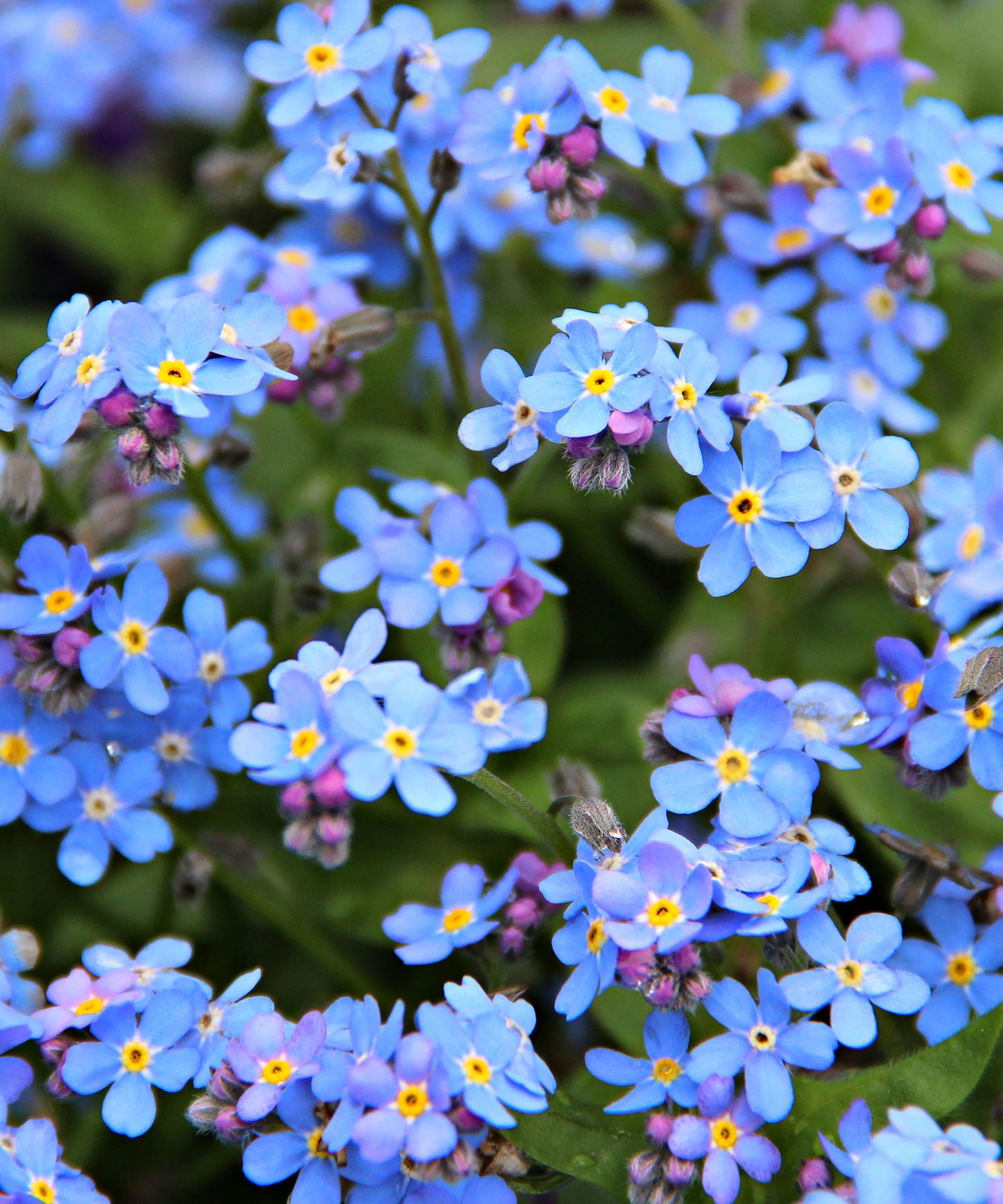
Also commonly called forget-me-nots, Myosotis come in various forms, including biennial and short-lived perennial types. Ideal for adding distinctive blue flowers to any garden during spring and early summer, forget-me-nots are adaptable and simple to cultivate.
Additionally, they are known as prolific self-seeding flowers, so they will return year after year once planted in a garden. Once introduced into a space, you will never need to sow them again, and you can enjoy their charming flowers every spring.
Forget-me-not seeds can be planted from spring to early August directly into their growing position in a sunny or part-shade spot. Sprinkle the seeds into the soil and cover with a thin layer of compost.
Keep the soil moist, and the seeds should germinate within two weeks. The seedlings should be thinned to around 10 inches apart. These young plants will overwinter to flower next spring.
See the range of myosotis seeds at Amazon
See the range of myosotis seeds at Walmart
See the range of myosotis seeds at True Leaf Market
Delphinium
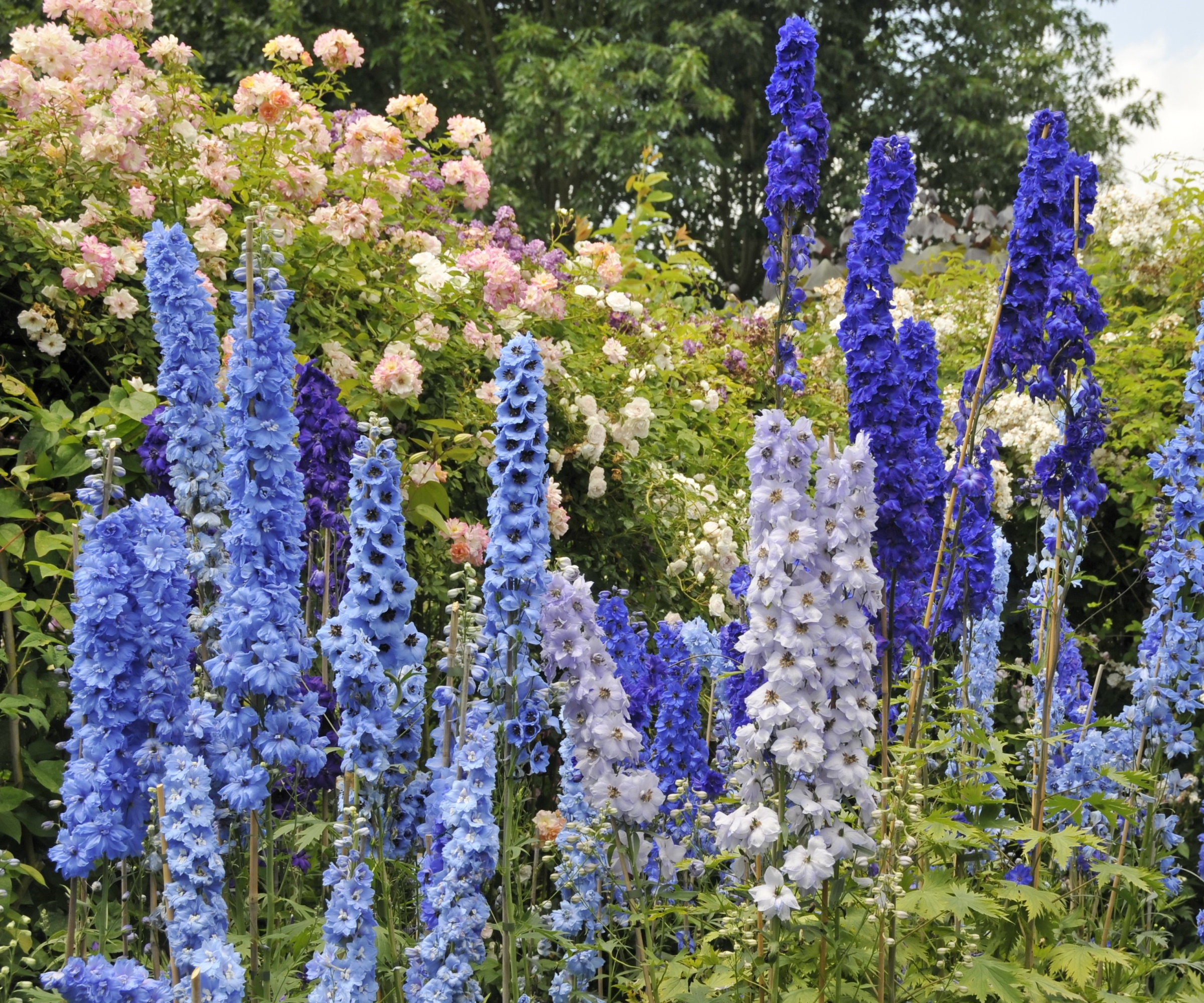
Delphiniums are popular tall perennial plants for cottage gardens. These dramatic plants have vivid, dense flower spikes that rocket skyward and burst into glorious bloom in early summer.
These flower spikes can reach six feet high and are typically in shades of blue or purple, but there are types of delphiniums that come in white or pink.
Growing delphiniums from seed is a cost-effective way to have lots of summer flowers for years to come, and July is not too late. While delphiniums are often sown indoors early in the year, you can sow seeds directly outdoors in summer this month.
Sow the seeds into well-draining, rich soil in a sunny, sheltered position. Thinly sow the seeds onto the surface, cover with a thin layer of soil, and keep the soil moist.
If you miss the window to sow outdoors this month, there is another opportunity to sow delphiniums for blooms next year. You can sow seeds indoors in late summer or early fall to plant outdoors come spring.
See the range of delphinium seeds at Amazon
See the range of delphinium seeds at Walmart
See the range of delphinium seeds at Burpee
See the range of delphinium seeds at True Leaf Market
Sweet Williams

Sweet Williams, or Dianthus barbatus, are biennials, or short-lived perennials in milder climates.
They bloom in late spring and summer, with charming serrated flowers in shades of red, pink, purple, and white, and are ideal for cottage garden beds, flower borders, cut flower gardens, or container gardens.
Sweet Williams like to grow in sunlight and well-draining soil. They are easy flowers to grow from seed, and can be sown directly into their growing position in late spring or early summer.
Alternatively, they can be started indoors in trays, modules, or small pots to be planted outside in late summer or early fall and flower next year.
Wherever you sow sweet william seeds, they are best planted at depths of only 1-2mm and prefer to develop in cool temperatures of 50-55°F. Too high, and there is a risk of leggy seedlings.
This Sweet William Seeds 'Double Mixture' at True Leaf Market is a lovely variety to sow and get a mix of blooms in shades of crimson, scarlet, and pink loved by hummingbirds, butterflies and bees.
Gaillardia

Also known as blanket flowers, these are showy, short-lived perennials that put on vivid displays of blooms. The daisy-like flowers come in shades of red, orange, and yellow to fill beds with eye-catching displays of color.
Plus, once they are established, gaillardia is a low-maintenance, drought-tolerant plant that will readily self-seed and keep growing in the same area. They are ideal plants for cottage or wildflower gardens and are easy to grow from seed.
You can sow gaillardia seeds directly into the soil in July to flower the following year. The young plants that develop in late summer can overwinter in US hardiness zones 3-10 and produce a great display of flowers next summer and fall.
A particularly popular variety is 'Arizona Sun', an All-America Selections winner with bicolored petals, yellow on the edge and dark red in the center. You can get 'Arizona Sun' Gaillardia seeds from Burpee to sow.
FAQs
Can I plant a rose in July?
You can plant container-grown roses in July into beds or containers. However, it is not the ideal time to plant roses as they are actively growing and you’ll need to water them regularly to ensure they establish during the hotter months.
Roses planted in July may not put on a great flowering display this summer, but will perform better in the years to come. If you do want to grow roses, they are best planted in early spring or fall.
It can be a busy month in the garden. As well as planting flowers, there is a lot of watering, feeding, weeding, and deadheading to do to keep your plants looking their absolute best. It can all add up to a long summer gardening checklist.
To help you plan your month, our guides to plants to prune in July and plants to fertilize in July can help you ensure your yard looks neat, healthy, and bountiful over the summer.

Drew has worked as a writer since 2008 and was also a professional gardener for many years. As a trained horticulturist, he worked in prestigious historic gardens, including Hanbury Hall and the world-famous Hidcote Manor Garden. He also spent time as a specialist kitchen gardener at Soho Farmhouse and Netherby Hall, where he grew vegetables, fruit, herbs, and cut flowers for restaurants. Drew has written for numerous print and online publications and is an allotment holder and garden blogger. He is shortlisted for the Digital Gardening Writer of the Year at the 2025 Garden Media Guild Awards.
You must confirm your public display name before commenting
Please logout and then login again, you will then be prompted to enter your display name.